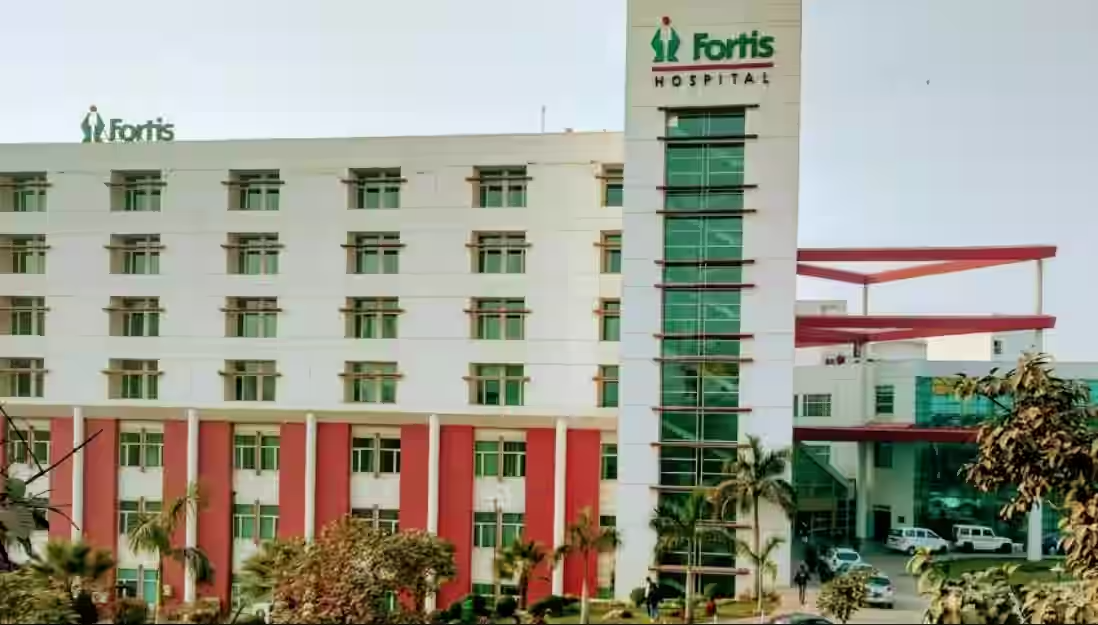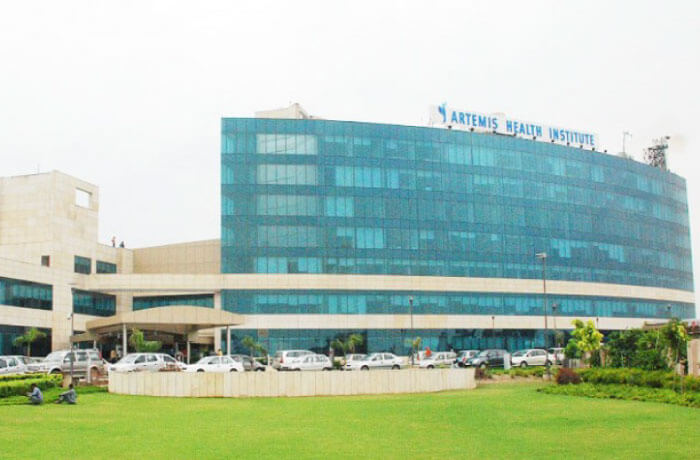Vascular Surgery
Chemoport Removal
Chemoport Removal
Chemoport removal is a minor outpatient procedure done under local anesthesia. A small skin incision lets the doctor safely remove the port, ensuring comfort and fast recovery with minimal complications.
Chemoport removal procedure
A Chemoport (chemoport, or port-a-cath, and also referred to as an implantable venous access device) is a small medical device that is placed under the skin to administer chemotherapy or medication directly through a vein. A port could be removed safely in a minor surgical procedure once chemotherapy treatment has been completed and this port is no longer necessary.
Indications for Removal
A chemoport is normally excised in cases:
- Long-term IV therapy or chemotherapy is achieved.
- The machine is not operating well anymore.
- Blockage or infection takes place.
- The patient complains of pain or discomfort at the port site.
- It is not medically necessary to the doctor.
How is chemoport removed?
Procedure Steps
Preparation
- The operation is carried out in a minor operation theatre or day-care.
- The patient is lying flat and the area (also chest or upper arm) is washed and sterilized.
- To numb the area, local anaesthesia is done. General anaesthesia can be used in children or in panic patients.
Incision and Port Exposure
- An opening is created on top of the old chemoport site.
- The surgeon then carefully pulls out the tissue so that he exposes the port and catheter (the small tube that leads to the vein).
Elimination of the Catheter and the Port
- The catheter is slowly removed on the vein.
- The pocket underneath the skin has the port chamber (metal or silicone disc) removed.
- The surgeon makes sure that there is no bleeding or rupture of adjacent vessels.
Closure
- The area is sprayed and inspected against infection.
- The wound is stitched using absorbable or non-absorbable sutures.
- A small bandage or sterile dressing is put on.
Duration
- The treatment process averages 20-40 minutes.
- It is commonly done as a day-care (outpatient) (that is, the patient is allowed to return home on the same day).
Post-chemoport removal Recovery
- Light pain or bruising can take several days.
- The site of incisions must remain dry.
- Non-absorbable stitches are normally taken out after 7-10 days.
- The complete healing takes 1-2 weeks.
- Unless specified otherwise, normal activities can typically be reinstated in 24-48 hours.
Chemoport removal complications
Despite the fact that chemoport removal is a minor and a relatively safe procedure, there are some complications that occasionally arise. Majority of them are mild and temporary, yet knowing them aids in detecting them at an early age and giving them appropriate attention.
Chemoport removal risks:
Bleeding or Formation of Hematoma
- Bleeding of the incision site or minor collection of blood under the skin (hematoma).
Causes:
- Low pressure on post-catheter removal.
- Fragile blood vessels
- Anticoagulants (blood-thinning medication)
Management:
- Local pressure and cold compress.
- In case of formation of large hematoma drainage can be required.
Infection
- The incidence site or the site of the port location can be infected.
Symptoms:
- Redness, warmth, or swelling
- Pus or discharge
- Fever or pain at the site
Management:
- Oral or IV antibiotics
- Wound drainage in case of abscess.
Pain or Discomfort
- Lightheaded pain or tenderness in the area of the incision several days.
Causes:
- Tissue healing
- Minor inflammation
Management:
- Painkillers (paracetamol or medication that is prescribed)
- Do not press or rub the area.
Catheter Fragment Retention (Rare)
- The catheter can also break apart and be lodged inside the vein when the machine is antiqued or adhesive as a result of scar tissue.
Risks:
- Blood vessel injury
- Clot formation
Management:
- Debridement by means of fluoroscopic (X-ray-directed) technique.
- Unless otherwise indicated, interventional radiology procedure.
Air Embolism (Extremely Rare)
- Air entering the vein upon catheter removal that may go to the heart or lungs.
Symptoms:
- Sudden shortness of breath
- Chest pain
- Drop in blood pressure
Management:
- Emergency treatment.
- Supportive care and oxygen therapy.
Scarring or Skin Changes
- At the site of incision a small scar is usually left behind. In other instances, keloid (thick scar) can be developed.
Management:
- Scar creams or silicone gel
- Injections of laser or steroids when cosmetically relevant.
Vein Thrombosis (Very Rare)
- Development of clot in the vein in which the catheter was inserted.
Symptoms:
- Pain or swelling in arm/neck (based on the location of the port)
Management:
- Thromboendarterectomy on the positive ultrasound.
Chemoport removal recovery time
Chemoport removal is an outpatient surgery of minor significance and the healing process is quick and painless. Expressly, a majority of patients experience a normal functioning period of 1 to 2 weeks.
Immediate Recovery (Same Day)
- This process commonly lasts 20-40 minutes with local anaesthesia.
- You will spend 1-2 hours as an observer and go home.
- A small amount of soreness, tightness or bruising around the incision is normal.
- You need to eat and drink normally when the effect of anaesthesia subsides.
First 24–48 Hours
- Dressing is to be kept dry and clean.
- One should not take a shower at least 24 hours or until given a go-ahead by your doctor.
- You can experience minor pains, which can be addressed using prescription pain killers.
- Do not lift and stretch the arm/chest region heavily.
- Swelling or redness of minor extent is normal - however, there should not be pus, discharge, or pain, which gets progressively worse.
Days 3–7
- The majority of the patients are able to resume normal light activities (walking, desk work, etc.) within 2 -3 days.
- Recovery of the wound still persists, and bruising begins to disappear.
- In case of non-absorbable stitches, they tend to get removed after 7 to 10 days.
- In the event of absorbable sutures, it dissolves itself.
1–2 Weeks
- The wound on which the incision was made is typically healed in 10-14 days.
- The region can take a few days to be tender or hard.
- Any scab or glue that is around the incision will automatically fall off.
- A normal state of affairs such as exercise can be resumed 1-2 weeks (with your doctor clearance).
Factors Affecting Chemoport removal cost India
The following are some of the major variables that can influence the price of removal of a chemoport (i.e., the device that is implanted to access the chemotherapy):
Hospital and location type
- A process in a private, high-end hospital of a metro city will be more expensive than a process in a government or other smaller hospital of a cheaper facility.
Surgery / anaesthesia / theatre bill
- Although chemoport removal is comparatively small, application of operation theatre (or day-care unit), anaesthesia (local or sedation), surgeon fee and assistants cost is added to the cost.
- Cases that are more difficult (e.g. difficult access, older port, scar tissue) might need more time or equipment.
Patient factors / procedural complexity
- When a port is integrated into scar tissue, the removal of the catheter is difficult, there are complications (the risk of infection, bleeding) then the operation can take more time or include more procedures, hence, it is more expensive.
- Possible pre-operative work-up, monitoring, or post-op care may be enhanced by the comorbidities of a patient (e.g., bleeding disorders, risk of infection, etc.).
Consumables / equipment / implant / device condition
- Although removal implies that you are not planting a new machine, you must have the appropriate tools, sterility, potentially screening to locate the catheter, potentially a little drain etc.
- In addition, in case of the need to remove the device under image guidance (infrequent), it will be more expensive.
Room / stay charges
- The procedure will involve either day-care (also known as outpatient) or overnight admission into a hospital, which will influence the cost.
- The room type (general ward or a private room) and additional facilities selected are going to be added to the bill.
Pre- and post-operative examinations
- Pre-operative laboratory tests, imaging (where necessary), anaesthesia clearance, and post-operative monitoring are expensive.
- In case of complications, such as bleeding, infection, because of removal (additional care is necessary), the cost increases.
Facility/infrastructure of the hospital and accreditation
- Given that hospitals that have more advanced infrastructure have better accreditation and specialised personnel, they might cost more.
- It is also influenced by high location and branding.
Conclusion
Chemoport removal is simple, quick and safe surgical procedure that is normally done on a day-care basis under local anaesthesia. The recovery is generally painless and the majority of the patients resume normal functions in 1-2 weeks. Chemoport removal is a safe method to help patients to transition safely after chemotherapy, and the subject of medical supervision and compliance with the post-procedure necessities will guarantee the restoration of comfort and normal everyday functioning without any long-term complications.
Chemoport removal in India with GetWellGo
GetWellGo is regarded as a leading supplier of healthcare services. We help our foreign clients choose the best treatment locations that suit their needs both financially and medically.
We offer:
- Complete transparency
- Fair costs.
- 24 hour availability.
- Medical E-visas
- Online consultation from recognized Indian experts.
- Assistance in selecting India's top hospitals for Chemoport removal treatment.
- Expert surgeon with a strong track record of success
- Assistance during and after the course of treatment.
- Language Support
- Travel and Accommodation Services
- Case manager assigned to every patient to provide seamless support in and out of the hospital like appointment booking
- Local SIM Cards
- Currency Exchange
- Arranging Patient’s local food
FAQ
What is chemoport removal?
- Chemoport removal is a simple surgery that is carried out to remove an implanted port (chemotherapy or IV drugs) when it is not necessary.
Does it hurt when chemoport is taken away?
- No. The operation is performed with local anaesthesia and therefore you will not experience pain only some general pulling or pressure. It may be followed by some soreness but this normally subsides in a few days.
Is there a scar after removal?
- The port is normally removed leaving a small scar. It subsides with time; it can be reduced by appropriate wound treatment or scar cream.
Is it possible to reuse the chemoport in the future?
- No. After being removed it becomes impossible to reinsert the same chemoport. In case of need of additional treatment, a new port will have to be implanted.
When can I take a bath after the removal of chemoport?
- About 24-48 hours (when the doctor makes it known that the incision is dry and closed) you can take a bath.
Any post-chemotherapy care recommendations?
- Another tip is not to engage in vigorous activities, lift heavy items or strain the chest / arm region in the course of a week or thereabout to give the body ample time to heal.
TREATMENT-RELATED QUESTIONS
GetWellGo will provide you end-to-end guidance and assistance and that will include finding relevant and the best doctors for you in India.
A relationship manager from GetWellGo will be assigned to you who will prepare your case, share with multiple doctors and hospitals and get back to you with a treatment plan, cost of treatment and other useful information. The relationship manager will take care of all details related to your visit and successful return & recovery.
Yes, if you wish GetWellGo can assist you in getting your appointments fixed with multiple doctors and hospitals, which will assist you in getting the second opinion and will help you in cost comparison as well.
Yes, our professional medical team will help you in getting the estimated cost for the treatment. The cost as you may be aware depends on the medical condition, the choice of treatment, the type of room opted for etc. All your medical history and essential treatment details would be analyzed by the team of experts in the hospitals. They will also provide you with the various types of rooms/accommodation packages available and you have to make the selection. Charges are likely to vary by the type of room you take.
You have to check with your health insurance provider for the details.
The price that you get from GetWellGo is directly from the hospital, it is also discounted and lowest possible in most cases. We help you in getting the best price possible.
No, we don't charge patients for any service or convenience fee. All healthcare services GetWellGo provide are free of cost.
Top Doctors for Vascular Surgery
Top Hospitals for Vascular Surgery
Contact Us Now!
Fill the form below to get in touch with our experts.

.jpg)





